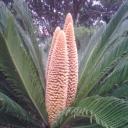Yahoo Answers is shutting down on May 4th, 2021 (Eastern Time) and beginning April 20th, 2021 (Eastern Time) the Yahoo Answers website will be in read-only mode. There will be no changes to other Yahoo properties or services, or your Yahoo account. You can find more information about the Yahoo Answers shutdown and how to download your data on this help page.
Trending News
How does the plant pump water up?
a very tall tree has tender buds up top, water enters through the root and is pumped, but where does the energy come from? a Hyperion, measuring at 379.3 feet (115.6 m), pumps to the top 50 liters of water in one day and this is a work of 56.7 KJ or watt*sec.
solar energy?
4 Answers
- bubbaLv 69 years agoFavorite Answer
Some water is stored in the twigs and are super-saturated with sugar to keep from freezing, One the buds break and leaves start to form, stomata are present (depending on species, twigs may have some too)..
Capillarity action and by the pressure at the top being lower because of the transpiration from the opening of the stomata in the leaves, drawing the water up and out. If it gets too hot, the stomata close in order to preserve water (plant and species specific).
- saffronesqueLv 79 years ago
It is due to the cohesiveness of water molecules. As water vapor leaves the leaf, tension is created on the water inside the xylem cells. Water is literally pulled up the plant by evaporation. There is enough tension inside the xylem cells that the diameter of the tree actually decreases slightly during the day and expands as the transpiration rate decreases.
Source(s): Botanist - 9 years ago
The water moves from areas of greater pressure to lower pressure, even if gravity wants to pull it straight down. Imagine your holding a water balloon and squeeze. You can make the water go upwards in the balloon because of the force you are exerting on it. It is being pushed in from all sides and squirts up.
- Anonymous9 years ago
Capillary Reaction - like a sponge - perhaps Wiki can explain the enigma of the work done for you.
Source(s): http://www.sciencebuddies.org/science-fair-project... http://en.wikipedia.org/wiki/Capillary_action






